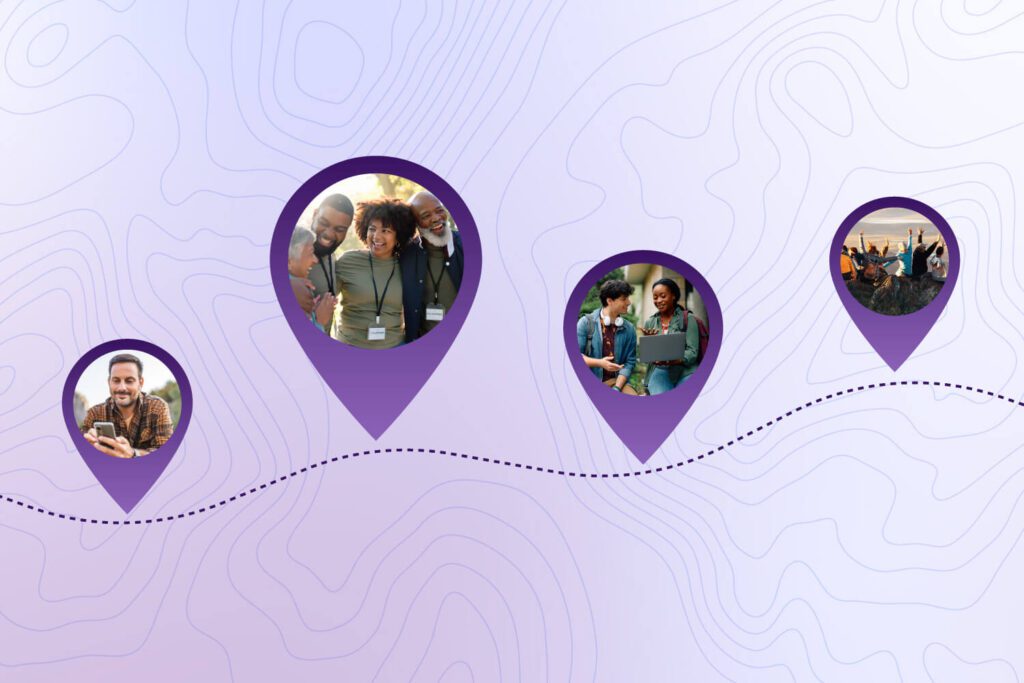Mid-level donors can help your nonprofit organization raise more and create a pipeline for your major gift officers. Successful mid-level donor programs focus on giving donors a personalized experience while using data analytics to automate administrative tasks.
Although mid-level donors make up a small portion of the overall donor pool, their collective giving makes up a large percentage of total philanthropic contributions. Stewarding these donors with a mid-level donor program can help you maximize this stream of revenue and eventually move them up the pipeline to become major donors. Here are the steps you’ll need to follow to implement a mid-level donor program.
1. Identify your mid-level donors
The mid-level donor category includes supporters who give amounts above your organization’s average gift but below the smallest major contribution. If your organization’s average gift is around $200 and your major gifts team handles donors who give $5,000 or more, then your mid-level donors are those who make contributions between $201 and $4,999. Collaborate with your membership and major gifts teams to discern who these donors are. Once you’ve identified your mid-level donors, you can start developing a mid-level donor program. This program will incorporate the personal touch your major gifts officers use and the analytical savvy of your membership team.2. Assign dedicated staff
You should choose at least one development staffer to focus solely on cultivating, soliciting, and stewarding mid-level donors. If you have capacity on your existing team, consider assigning this task to a staffer on your major gifts team. Your mid-level giving manager will serve as the primary point of contact for these donors. Every welcome packet and handwritten thank-you note should include their business card, and their email signatures should encourage donors to reach out to them. By maintaining consistent contact with donors, your supporters will receive thoughtful calls and emails about the future of your nonprofit and how they can be a part of it.3. Brand your mid-level giving program
Creating a branded group and giving them increased access to your organization provides a sense of exclusivity for your mid-level donors. Think of this as treating these donors like investors. Start by giving this special group a name. A distinct brand name signals to donors that they command the respect and attention of the organization. Consider naming the group after a well-known advocate for your cause or a more general name that denotes importance like the President’s Circle, the Conservation Society, or the Leadership Club. You can also choose branded colors, images, fonts, and logos just for this program, making sure to check that these elements align with your purpose and brand persona. While you should still incorporate elements of your organization’s overarching branding, creating a subset of branded elements for different giving levels will make mid-level donors feel an additional sense of belonging.4. Provide sophisticated content
Once you’ve named your program, determine what perks you’ll share with these donors. You might organize calls, webinars, or events to give them deeper insight into the organization. Consider hosting a quarterly conference call between your executive director and mid-level donors to update them about your nonprofit’s work. Your major gifts team probably already creates sophisticated, valuable content that you can adapt to share with your mid-level audience. As you communicate with these donors, continue to center the donor in your messaging. Make them the heroes of your story who allow you to further your purpose.5. Make fewer asks
Because your mid-level donors contribute more money per donation than average donors, you should make fundraising asks to them less frequently. A general rule of thumb is to send between two and eight solicitations a year. Remember to make these solicitations personal by reaching out to donors through mail or over the phone.6. Call your donors
A good way to start off your mid-level donor program is with a round of relationship cultivation, stewardship, and thank-you calls. Organize a phone bank with your whole staff, asking them to spend a night reaching out to these mid-level donors. Make sure to provide a brief training session and a script staff can use if they reach a donor’s voicemail. Your mid-level donors will be delighted to receive a call without an ask attached, and you might learn valuable insights like when in the year they prefer to be solicited. Make sure to record all new information you receive in your nonprofit CRM software.7. Say thank you
You already know how crucial a proper thank you is. When working with mid-level donors, make sure that your thank-you messages are always personalized and thoughtful. Consider sending a handwritten thank-you note or personalized email for each gift. When a donor increases their giving, acknowledge their increased commitment. Call the donor to say thanks or have your executive director or director of programming reach out. Because your goal is to build a life-long relationship with these donors, how you treat them now, whether they give $250 or $2,500 annually, is crucial. By investing time and effort into building a mid-level donor program, you can engage mid-level donors to boost retention rates and increase your revenue. Your mid-level donor program is part of a long-term cultivation strategy.
Ready to Get Started?




